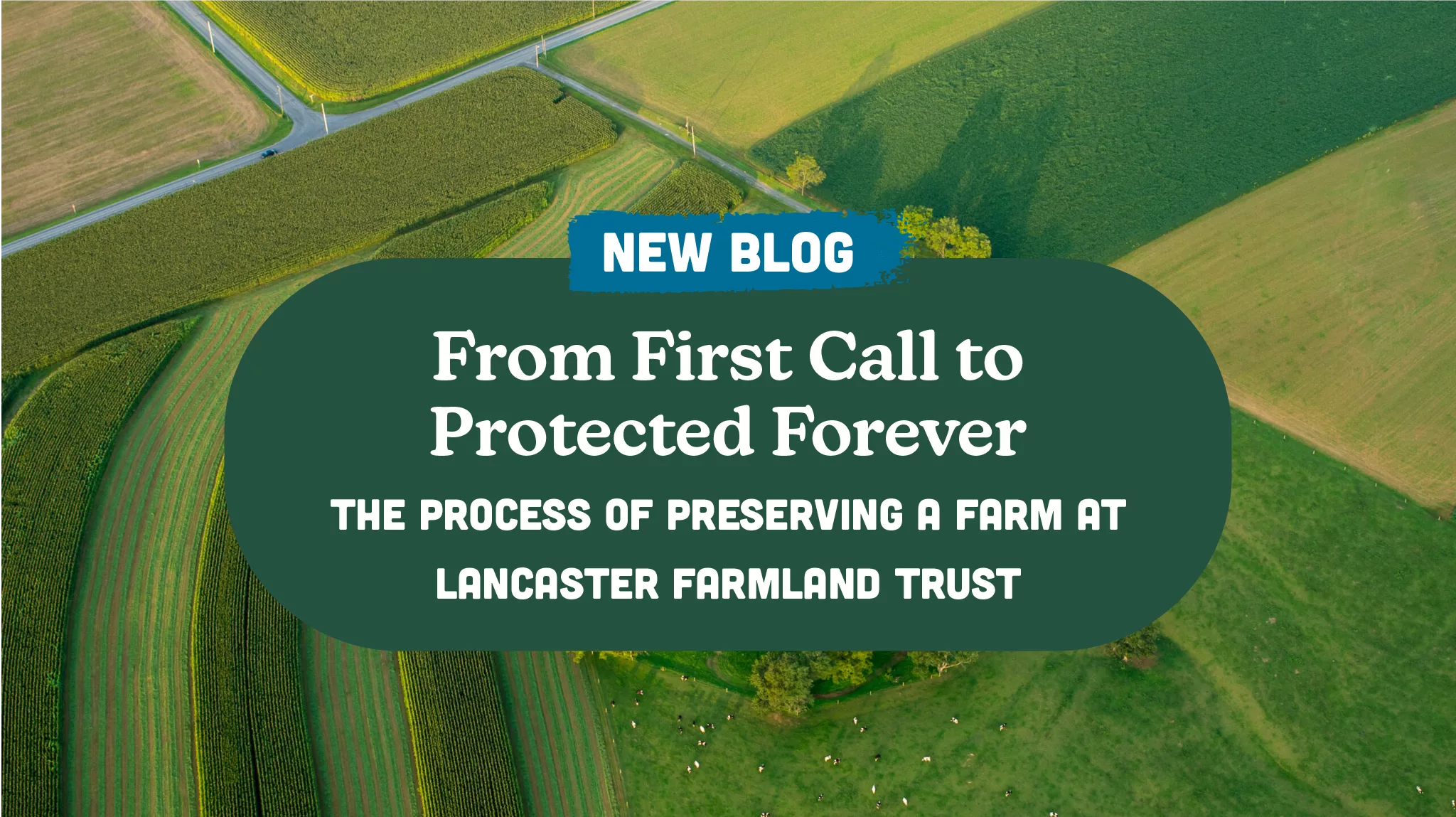From First Call to Protected Forever

At Lancaster Farmland Trust (LFT), protecting a farm requires various people and a lot of hard work. The process can take months to finish, and many of our staff members work diligently to protect the land we love, but what exactly does this process look like? Here’s a behind-the-scenes peek at how farmland preservation works at LFT!
Most of our preservation projects begin the same way—with a phone call.
“Most farmers know who we are and what preservation is already thanks to word-of-mouth, so they will call us to learn more,” explains Jeb Musser, LFT’s VP of Land Protection.
In some cases, our Land Protection staff will send letters to farm owners who might be interested in preserving their farms, such as farmers whose properties are surrounded by other preserved properties.
“Since many of our farmers aren’t on social media, we rely on good old-fashioned snail mail to make the connection,” notes Jeb.
Once the connection is made and a farmer is interested, LFT staff meets with them for a deeper conversation. This meeting is the perfect time to discuss how the rest of the process works and answer any questions.
“Most of the time, farmers want to know what preservation will mean for them. They want to know if they can still build a house on the property, what happens when they sell the farm, if they can run a business, and more. This is also a great time to explain how payment works for landowners.”
On average, farmers receive about $1,700 per acre to preserve their land, depending on the value of the development rights they’re donating in return. Many farmers utilize these funds to invest in the farm, update structures, and pay off debt.
Next, LFT staff visit the farm to check out the property and complete a Land Evaluation and Site Assessment (LESA) test. This assessment scores the property’s attributes, such as soil class, road frontage, and more.
After all questions are answered and the assessment is complete, it’s time for the landowner to sign a letter of intent and the Board of Trustees to review the farm for approval! If funding is available for the project, the farmer signs an agreement of sale document. If not, the farm is added to our waiting list until funding becomes available. Currently, we have about 40 farms on this waiting list!
After the agreement of sale is signed, we enter what we call the “due diligence phase,” which typically lasts around six months. During this period, a lot happens behind the scenes:
- Title Search: LFT checks the property’s title to verify ownership of the farm and ensure everything is spick and span before moving forward with preservation paperwork.
- Property Survey: After the title work is complete, LFTverifies the property’s boundary lines to ensure there are no encroaching neighbors or other issues. For example, if a neighbor’s driveway infringes on the soon-to-be preserved farm’s boundaries, we work with both landowners to ensure this is fixed before finalizing preservation.
- Baseline Report: LFT photographs the farm at the state of preservation for future monitoring. To learn more about baselines, click here!
- Easement Drafting: Easements are the legal documents that protect the land. LFT works with the landowner to draft an easement that meets their needs and protects the farm.
- Conservation Plan Review: Every preserved farm must have an updated conservation plan to guarantee the farm is happy and healthy. Most farmers already have an existing conservation plan in place, but just in case, LFT will review it to establish that it’s updated. If the plan is not up to speed, we work with landowners to find funding for any necessary conservation projects.
- Legal and Lender Coordination: Our legal team reviews everything, and LFT works with lenders to ensure a smooth closing.
After the “due diligence” period is over, it’s time for settlement! The farmer signs the final paperwork and receives payment. We record the conservation easement with the county courthouse, and from that point on, the land is permanently protected.
Farmland preservation at LFT is a thorough and thoughtful process meant to protect precious soil and support our hard-working farmers. It’s built on trust, relationships, and a shared commitment to keeping Lancaster County’s farmland productive and beautiful for future generations. “Agriculture is what makes Lancaster County, Lancaster County,” says Jeb, “and we’re protecting that.”
